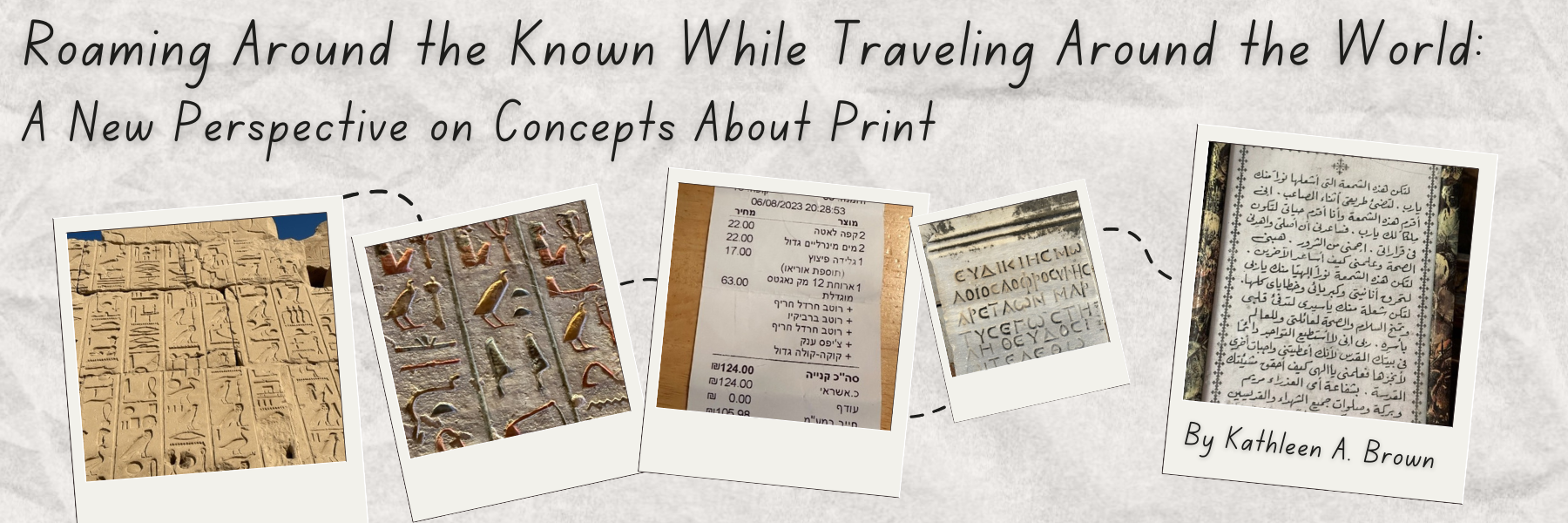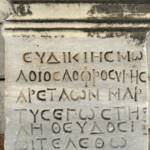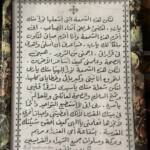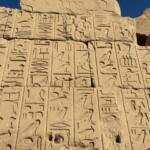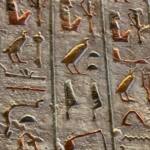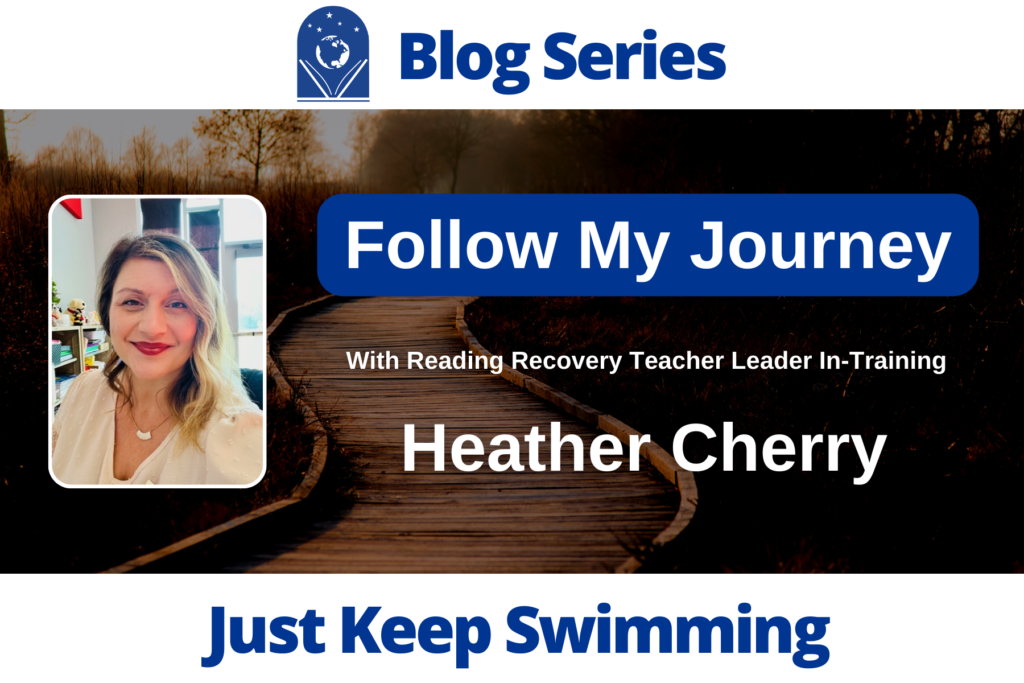BLOG
Roaming Around the Known While Traveling Around the World: A New Perspective on Concepts About Print
“It’s all Greek to me!” This expression usually means something is hard to read or understand. I shared that sentiment many times on my travels over the last few months.
While traveling to Greece and the Middle East this summer, my concepts about print were challenged greatly. I felt like one of my students trying to grasp how print works and what it means.
Early in the trip, it was quite comical to see four educated adults trying to read a receipt from a restaurant. We turned the receipt many different ways to see if that would help. It did not! Our sense of directionality was shaken. We also looked for consistent symbols to decode the text and make some sense of what we were reading. We were mildly successful. Even the money conversion was tricky to figure out — we eventually just gave up and hoped what we ordered and paid for was accurate. Examples like this happened often as we tried to navigate our way in new places, with foreign languages and cultures.
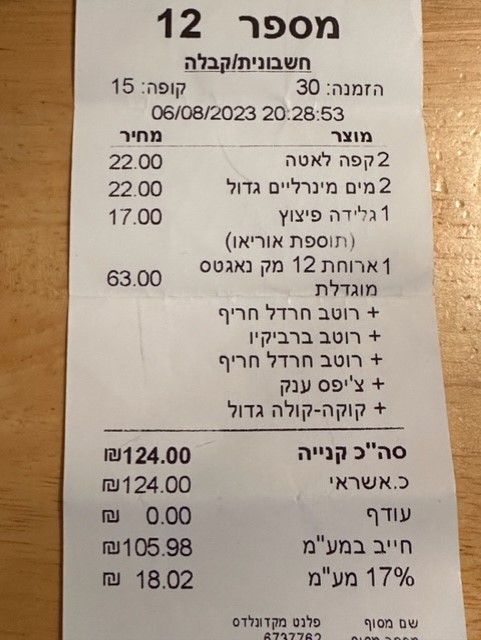
You can only get so far by pointing, gesturing, and smiling. I tried to rely on my knowledge of learning language and the reading and writing process. Like your students who rely on you, I relied on English-speaking locals or tour guides to assist on my journey.
During my travels, I was constantly searching to find something that I recognized in print and to make sense of, such as street signs, menus, receipts, brochures, or billboards. I also tried to pull in my oral language knowledge to decipher what was being said to me.
Our tour guides often provided scaffolds such as pointing and skimming their finger along the print. They also showed us how to match the symbols with the English alphabet. Pictures were often used to help explain information. In addition, our tour guides helped us orally learn and practice basic words or expressions, such as hello, good morning, please, thank you, welcome, peace, and goodbye or until next time. All the needed supports were helpful, but not enough to aid in understanding how print works in new languages that were not our own or unfamiliar. We were by no means independent; we continued to be very dependent on our tour guides.
Dr. Clay reminds us, “Early literacy learning involves discovering knowledge of the written code, seeing the symbols (letters) and patterns of symbols, and looking at print according to the directional rules of our written language. This is not a naturally occurring set of learning. The conventions of the code are arbitrary.” Literacy Lessons Designed for Individuals, page 48. I could hear Dr. Clay’s words as I tried to decipher text in a foreign language.
What I thought I knew about how print worked was challenged. I didn’t know where to start or which way to go or where to go after that. I questioned my one-to-one matching as I was trying to decipher symbols. I wasn’t sure whether to start at the top of the page or the bottom of the page.
I tried to decipher the print, but my foundational skills were compromised. I quickly found out that my knowledge of the English alphabet did not apply to Greek, Arabic, Hebrew, or Turkish symbols. After observing others in my travels, I noticed the people were reading and writing, right to left. I was confused and amazed all at the same time.
- Greek Stone
- Writing sample of Arabic
- Egyptian Symbols
- Color Egyptian Symbols
My automatic response on how to approach print was now disoriented. Although I made attempts to read foreign languages, I was frequently unsuccessful. I also felt inadequate and insecure about my lack of knowledge or understanding.
As a proficient adult reader and writer, it is often a stretch to really understand what students are going through when they are learning to read and write, especially those who struggle. On page 39 of An Observation Survey of Early Literacy Achievement, Dr. Clay shares, “Because some children fall easily into appropriate ways of looking at print, parents and teachers can underestimate how extraordinarily complex it is to understand some of the rules of written code. It is very easy for a child to pick up strange ways of exploring print that we teachers may not notice but which can become established habits.”
I came close to that feeling or experience while traveling through Greece and the Middle East. I have even greater empathy for how hard it can be to grasp and use concepts about print in reading and writing. Like our students, I needed modeling, guidance, patience, and practice.
“Learning about direction, locating something that you know and working with spatial layout of print on a page are foundational habits for literacy processing. They are formed in the background as children work on literacy tasks. Both reading and writing use the same set of rules so children get two kinds of opportunities to practice this early learning.” Literacy Lessons Designed for Individuals, page 49.
Start the school year with a fresh set of eyes. Keenly observe your students while roaming around the known and throughout the lessons series with a more focused lens around concepts about print.
As Dr. Clay advises, “Try to capture as many aspects of the child’s reading and writing behaviours as you can. Make yourself specify just how he responds. Put it into words.” Although these questions are most appropriate for roaming around the known, consider using them throughout the lesson series.
What does he do well?
How does he help himself?
What more have you noticed about the letters, words, and other features of print that he knows?
Did he surprise you?
“Concepts that children have yet to learn can usually be developed while children are exploring a variety of texts, and the teacher can focus on particular needs that have been identified. The problematic thing is that if teachers are not expecting and watching for gradual change towards control over all these concepts, then some children will be practicing a variety of misconceptions and confusions. When these go unnoticed they can become habituated and hard to change.” An Observation Survey of Early Literacy Achievement, page 42
The arbitrary rules of the English language will feel foreign to students learning to take on literacy. Do not underestimate the importance of teaching and modeling concepts about print in both reading and writing. As an educator, I will carry the challenges I faced during my travels while trying to navigate language and literacy. I have a newfound appreciation for how concepts about print can be tricky to learn and apply to reading and writing. Moving forward, my teaching will reflect these new understandings.[1]
[1] Note: It is important to note that once students gain control over early concepts about print, it is time to move them out of patterned text. We want to arrange for opportunities for students to look at print and not use memory or pictures to predict text
 Kathleen A. Brown has worked for 37 years as a classroom teacher, literacy specialist, staff developer, and Reading Recovery teacher. She has served as the Reading Recovery teacher leader in a large urban district in California for the last 22 years. Kathleen has provided early literacy training and coaching for the district and has presented at local, state, and national conferences.
Kathleen A. Brown has worked for 37 years as a classroom teacher, literacy specialist, staff developer, and Reading Recovery teacher. She has served as the Reading Recovery teacher leader in a large urban district in California for the last 22 years. Kathleen has provided early literacy training and coaching for the district and has presented at local, state, and national conferences.
THE JOURNAL OF READING RECOVERY
Spring 2025
OPEN ACCESS: Centering Children and Working Towards Equity: Teaching All Children to Read by Catherine Compton-Lilly
Literacy Leadership in Support of Equity: Whatever It Takes by Allison Briceño
Exploring the Purposes, Power, and Potential of Familiar Reading by Jamie Lipp
Full Circle: From Student to Psychologist by Joyce Romano

